#Ministry of Electronics and Information Technology
Explore tagged Tumblr posts
Text
#Ministry of Electronics and Information Technology#Nano_Electronics#semiconductor#TechInnovation#powerelectronics#powermanagement#powersemiconductor
0 notes
Text
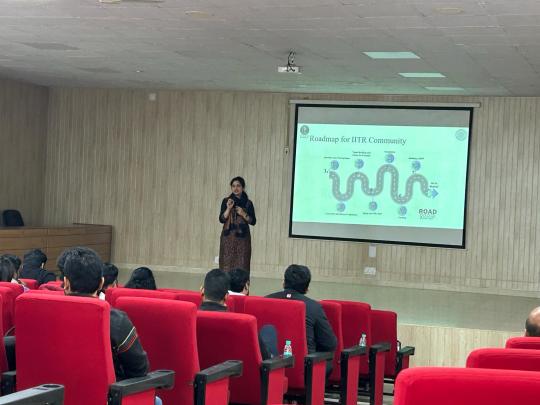
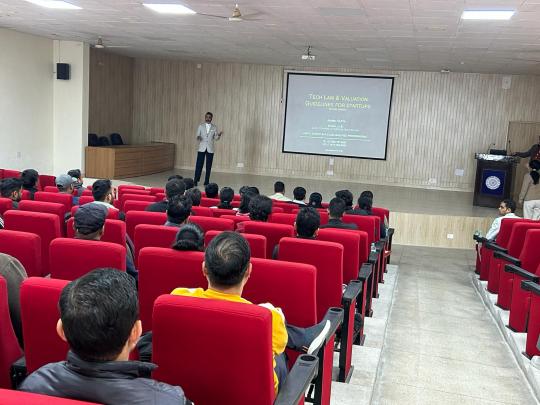
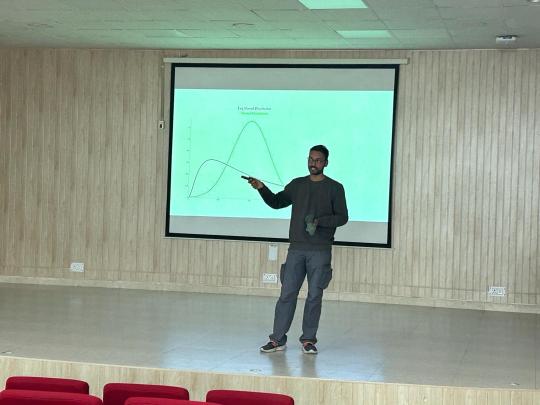

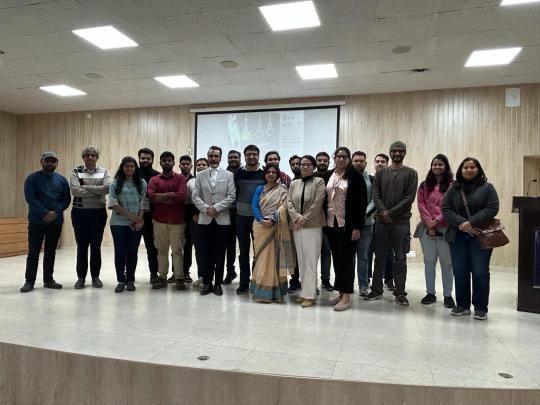
The IPR Cell recently convened a workshop on 24th February on "Innovation, Intellectual Property Rights (IPR), and Entrepreneurship Development" to explore the symbiotic relationship between innovation, intellectual property, and entrepreneurship. For fostering a culture of innovation and leveraging intellectual property for entrepreneurial growth, the workshop provided participants with invaluable insights into the nexus of these domains. Through interactive sessions, expert panels and attendees delved into strategies for nurturing innovation, protecting intellectual property, and catalyzing entrepreneurial ventures.
#iitroorkee#IPR#Innovation#EntrepreneurshipDevelopment#MINISTRY OF EDUCATION#GOVERNMENT OF INDIA#Ministry of Electronics and Information Technology#Digital India Programme.
0 notes
Text
Strengthening Digital Grievance Redressal in India: A Focus on GACs
Strengthening Digital Grievance Redressal in India: A Focus on GACs @neosciencehub #GACs #India #MinistryofElectronicsandInformationTechnology(MeitY) #neosciencehub
In an increasingly digital world, navigating the complexities of online interactions, especially on social media platforms, can be daunting for users. With the rapid growth of digital content and a corresponding rise in misinformation, the need for an effective grievance redressal framework has become paramount. The Ministry of Electronics and Information Technology (MeitY) in India has taken…
#featured#Grievance Appellate Committees (GACs)#India#Ministry of Electronics and Information Technology (MeitY)#sciencenews
0 notes
Text
"When Ellen Kaphamtengo felt a sharp pain in her lower abdomen, she thought she might be in labour. It was the ninth month of her first pregnancy and she wasn’t taking any chances. With the help of her mother, the 18-year-old climbed on to a motorcycle taxi and rushed to a hospital in Malawi’s capital, Lilongwe, a 20-minute ride away.
At the Area 25 health centre, they told her it was a false alarm and took her to the maternity ward. But things escalated quickly when a routine ultrasound revealed that her baby was much smaller than expected for her pregnancy stage, which can cause asphyxia – a condition that limits blood flow and oxygen to the baby.
In Malawi, about 19 out of 1,000 babies die during delivery or in the first month of life. Birth asphyxia is a leading cause of neonatal mortality in the country, and can mean newborns suffering brain damage, with long-term effects including developmental delays and cerebral palsy.
Doctors reclassified Kaphamtengo, who had been anticipating a normal delivery, as a high-risk patient. Using AI-enabled foetal monitoring software, further testing found that the baby’s heart rate was dropping. A stress test showed that the baby would not survive labour.
The hospital’s head of maternal care, Chikondi Chiweza, knew she had less than 30 minutes to deliver Kaphamtengo’s baby by caesarean section. Having delivered thousands of babies at some of the busiest public hospitals in the city, she was familiar with how quickly a baby’s odds of survival can change during labour.
Chiweza, who delivered Kaphamtengo’s baby in good health, says the foetal monitoring programme has been a gamechanger for deliveries at the hospital.
“[In Kaphamtengo’s case], we would have only discovered what we did either later on, or with the baby as a stillbirth,” she says.
The software, donated by the childbirth safety technology company PeriGen through a partnership with Malawi’s health ministry and Texas children’s hospital, tracks the baby’s vital signs during labour, giving clinicians early warning of any abnormalities. Since they began using it three years ago, the number of stillbirths and neonatal deaths at the centre has fallen by 82%. It is the only hospital in the country using the technology.
“The time around delivery is the most dangerous for mother and baby,” says Jeffrey Wilkinson, an obstetrician with Texas children’s hospital, who is leading the programme. “You can prevent most deaths by making sure the baby is safe during the delivery process.”
The AI monitoring system needs less time, equipment and fewer skilled staff than traditional foetal monitoring methods, which is critical in hospitals in low-income countries such as Malawi, which face severe shortages of health workers. Regular foetal observation often relies on doctors performing periodic checks, meaning that critical information can be missed during intervals, while AI-supported programs do continuous, real-time monitoring. Traditional checks also require physicians to interpret raw data from various devices, which can be time consuming and subject to error.
Area 25’s maternity ward handles about 8,000 deliveries a year with a team of around 80 midwives and doctors. While only about 10% are trained to perform traditional electronic monitoring, most can use the AI software to detect anomalies, so doctors are aware of any riskier or more complex births. Hospital staff also say that using AI has standardised important aspects of maternity care at the clinic, such as interpretations on foetal wellbeing and decisions on when to intervene.
Kaphamtengo, who is excited to be a new mother, believes the doctor’s interventions may have saved her baby’s life. “They were able to discover that my baby was distressed early enough to act,” she says, holding her son, Justice.
Doctors at the hospital hope to see the technology introduced in other hospitals in Malawi, and across Africa.
“AI technology is being used in many fields, and saving babies’ lives should not be an exception,” says Chiweza. “It can really bridge the gap in the quality of care that underserved populations can access.”"
-via The Guardian, December 6, 2024
#cw child death#cw pregnancy#malawi#africa#ai#artificial intelligence#public health#infant mortality#childbirth#medical news#good news#hope
910 notes
·
View notes
Text
WIP | Revival of The Windslar M-Train Station

Revival of a Monumental Project
Due to high demand, Lesmana Enterprise will be renovating the Windslar M Train Station to meet the latest standards of travel. Originally built in 1998 by Lesmana Enterprise in cooperation with the Windenburg Royal Ministry of Transport, the station serves as the terminus of the Windslar-Lykke line in the Windenburg High-Speed Rail network. This renovation aims to enhance passenger experience, modernize facilities, and ensure efficient connectivity for future travelers.

Easing your Travels
As part of the renovation, the Windslar M Train Station will be transformed into a modern transportation hub, equipped with state-of-the-art amenities. Passengers can look forward to a spacious café, a convenient capsule hotel for overnight stays, and premium waiting lounges. The Station will also feature digital information kiosks, luggage storage services, automated ticketing systems, and high-speed Wi-Fi to enhance the travel experience. Designed with comfort and efficiency in mind, this upgrade ensures that Windslar M remains a key gateway in the Windenburg High-Speed Rail network.

The Seraphim, the Legend of the Windeburg High Speed Rail Network
The Magnetschwebebahn-Serie A12 Seraphim (MSB A12 Seraphim), developed by Behr Technologies, is the latest advancement in high-speed rail travel. Designed for efficiency and comfort, this cutting-edge maglev train can reach a top speed of 510 km/h, ensuring rapid transit across the Windenburg High-Speed Rail network.
To enhance passenger experience, Lesmana Enterprise and Landgraab Electronics collaborated on optimizing the train’s interior, integrating ergonomic seating, ambient lighting, smart infotainment systems, and advanced climate control. With a focus on both comfort and luxury, the Seraphim sets a new standard for modern high-speed travel.
The Seraphim emits a unique and ethereal sound as it glides along the track. If you stand near the train (while stationary), you can hear the soft hum of its electromagnetic systems, resembling a choir in harmony—a phenomenon that inspired its name. This signature sound adds to the futuristic and almost otherworldly experience of riding the MSB A12 Seraphim. (*yes this is also true in game)


More Information
Windslar M-Train Station will come in two options.
Windslar M-Train Station building.
The Seraphim on a viaduct for photo op.
In Other News, Lesmana Enterprise is now on X!
Follow below link for more.
Sul Sul!,
The Lesmana Enterprise Co., Ltd.
#simblr#lesmana-enterprise-ltd#sims 4#sims 4 aesthetic#sims 4 screenshots#ts4 simblr#sims 4 build#sims 4 no cc#showusyourbuilds#train station#high speed rail#train#station#windeburg#the sims 4 story#WIP#ir#cr
244 notes
·
View notes
Link
7 notes
·
View notes
Text
Minister of Economy and Industry Petar Dilov held a meeting with Susan Falatko, the Charge d'Affaires at the US Embassy in Bulgaria, to discuss the potential for strengthening economic ties and boosting trade between the two nations.
During the conversation, Minister Dilov highlighted the strategic significance of the United States as a partner to Bulgaria and underlined the importance of enhancing both trade and investment cooperation. He noted that in 2024, bilateral trade reached a value of 1.58 billion US dollars. Bulgarian exports to the US totaled 1.12 billion dollars, while imports stood at 456 million dollars.
The discussion focused on key areas for future economic collaboration, including launching a strategic dialogue between Bulgaria and the US, attracting more American investments, and advancing Bulgaria’s accession to the Organisation for Economic Co-operation and Development (OECD).
Minister Dilov emphasized Bulgaria’s interest in fostering investment in high-tech sectors such as automotive manufacturing, electronics, information technology, robotics, and artificial intelligence. He pointed out that these areas are essential for driving innovation and increasing the added value of the Bulgarian economy.
He reaffirmed the commitment of the Ministry of Economy and Industry to supporting efforts that lead to concrete progress in bilateral economic relations, stating that the institution would continue to offer its full cooperation.
Ms. Falatko, representing the US Embassy, welcomed Bulgaria’s ongoing initiatives to improve its investment climate. She highlighted the strong partnership between the two countries and stressed that political stability, particularly with the formation of a regular government, is vital for attracting and sustaining foreign investment.
2 notes
·
View notes
Text
KCCILHE visited IIT Delhi to attend “Startup Conclave 2023"
Members of Bizhive-The Entrepreneurship Society, KCCILHE visited IIT Delhi to attend “Startup Conclave 2023” organized by Government of Gujarat in association with Startup India, DPIIT, Ministry of Electronics & Information Technology (MeitY), and Department of Science & Technology (DST), Government of India.
Students had the chance to engage with a wide range of influential figures in the startup world, including startup founders, angel investors, venture capitalists, industry experts, and innovators. This dynamic exchange of groundbreaking ideas with emerging startup founders enabled students to enhance their understanding of the countless opportunities available. Additionally, our students, Mr. Vikas Sharma and Mr. Aaditya Pandey, shared their own startup concepts with fellow entrepreneurs. The overall experience left a motivational impact on all those who participated.

48 notes
·
View notes
Text

Drone to be launched from Su-57 would have already been developed
The idea would be to launch a swarm of drones from the Russian fifth-generation fighter.
Fernando Valduga By Fernando Valduga 28/11/2023 - 10:10am Military
Merely illustrative photo of a Su-57 flying with an Okhotnik drone.
The fifth-generation Su-57 fighter will have in the near future the ability to use mini-drones that the aircraft will carry on board. Mini-UAVs have already been created for various purposes, which can be placed both at an external fixed point and in the internal compartment and then launched into the air.
The fighter will launch a group of drones at once and control them, informs the agencyRIA Novosti.
The mini-UAV has the direct task of carrying out attack operations, performing reconnaissance and electronic suppression of enemy attack weapons. The launch of dozens of drones by a group of Su-57 will provide a breakthrough in air defense, overloading their information channels and reaching air defense systems both with the help of drones and with their own means of destruction.

In recent years, the development of unmanned technology, both in the civil and military fields, has grown at a rapid pace. In November 2021, Viktor Kladov, Director of International Cooperation and Regional Policy at Rostec State Corporation, said that as early as the next decade, manned combat aircraft will be gradually replaced by unmanned drones. This is due not only to the technological advantages of drones, but also to their ability to work in collaboration with other drones and manned aircraft.
The state-owned company is actively developing unmanned aerial vehicles (UAVs) capable of exchanging information and collaborating with Checkmate and Su-57. This opens up new perspectives for the creation of the so-called "drone swarm" - a concept in which several drones work together to perform different tasks in combat conditions.
A Su-57 fighter will be able to carry more than a dozen reconnaissance and attack drones and unmanned electronic warfare systems in the internal compartment of the fuselage. The UAVs will interact through secure communication channels both with the on-board complex of the carrier aircraft and with each other. One of the main advantages of this approach is the ability to effectively carry out complex missions that were previously inaccessible to combat aircraft. A swarm of drones can perform reconnaissance, attack targets, maintain air superiority and perform other tactical missions.
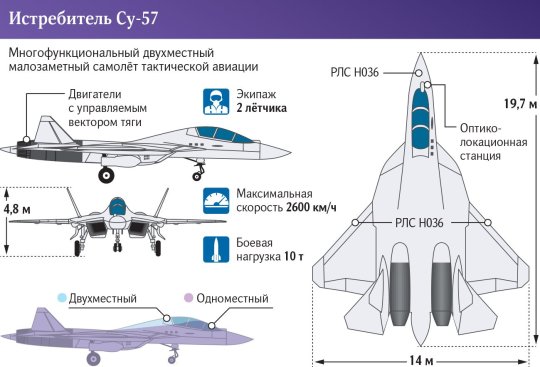
Previously, the Federal Intellectual Property Service issued the RU2807624 patent to the United Aircraft Corporation for a two-seat multifunctional aircraft for use as an air control center and ensuring interaction between aviation and military formations with network-centric methods to control weapons objects on the battlefield. It is assumed that due to a wide range of communication media, including satellite, high-speed communication channel and installation of equipment for group information transmission over long distances, the aircraft will also be used as a control point for unmanned aerial vehicles.
Tags: Military AviationDronesRFSAF - Russian Federation Aerospace Force/Russian Aerospace ForceSukhoi Su-57 Felon
Sharing
tweet
Fernando Valduga
Fernando Valduga
Aviation photographer and pilot since 1992, has participated in several events and air operations, such as Cruzex, AirVenture, Dayton Airshow and FIDAE. He has work published in specialized aviation magazines in Brazil and abroad. Uses Canon equipment during his photographic work in the world of aviation.
Related news
HELICOPTERS
Bell is selected for the X-Plane conceptual phase of DARPA's SPRINT program
27/11/2023 - 22:52
MILITARY
IMAGES: Philippine and U.S. Air Forces successfully conduct joint maritime patrol
27/11/2023 - 22:02
Prime Minister Modi's outcast in a Tejas LCA took place in Bengaluru, where Hindustan Aeronautics Limited (HAL) is headquartered (Photo: Ministry of Defense of India)
MILITARY
Indian Prime Minister flies, and the Indian Air Force will acquire 97 more LCA Tejas
27/11/2023 - 17:00
MILITARY
Elbit Systems will provide self-protection suites for A330 MRTT aircraft
27/11/2023 - 15:05
Among the newly acquired military equipment are included 11 Mil Mi-24P Hind attack helicopters that will be updated in two batches. (Photo: Ministry of Defense of Serbia)
HELICOPTERS
Serbian Armed Forces receive 11 Mi-24P attack helicopters purchased from Cyprus
27/11/2023 - 14:37
AERONAUTICAL ACCIDENTS
U.S. Navy starts investigation and releases images of the P-8 that sweeped the runway and stopped inside the sea in Hawaii
27/11/2023 - 10:16
7 notes
·
View notes
Text





26 March 2024: Crown Prince Hussein visited the closing exhibition of the first national electronic chip design competition, launched in August last year.
During a tour of the exhibition, he spoke with members of 12 teams, who represent a number of Jordanian universities and have qualified to the competition’s final stage, about their projects.
The competition’s closing ceremony was held at the Royal Cultural Centre, as part of the national programme to promote the semiconductor and electronic chips industry in Jordan, in line with the Economic Modernisation Vision.
The national programme aims to hone the skills of engineering and ICT graduates through intensive training, followed by practical applications, and mentoring from professors and experts in the industry.
The exhibition was held by the Fifth Industrial Revolution company, in partnership with the Ministry of Digital Economy and Entrepreneurship, the Crown Prince Foundation, and the Information and Communication Technology Association, with the support of Al Hussein Fund for Excellence.
The Crown Prince was accompanied by Minister of Education and Minister of Higher Education Azmi Mahafzah, Minister of Digital Economy and Entrepreneurship Ahmad Hanandeh, and CEO of the Fifth Industrial Revolution Company Mothanna Gharaibeh.
2 notes
·
View notes
Link
3 notes
·
View notes
Text
Best CDAC institute for Placement
Welcome to IACSD is one of the Best CDAC institute for Placement
The Centre for Development of Advanced Computing (C-DAC) serves as the primary research and development organization under the Ministry of Electronics and Information Technology (MeitY). It is committed to conducting R&D in the realms of IT, Electronics, and associated fields.
Contact us today to explore our courses and kickstart your path to success. 🚀
For More Details: Contact: 9607690988
#best cdac institute for placement#Institute for Advanced Computing and Software Development#Preparatory course for C-CAT
2 notes
·
View notes
Text
Empowering Digital Transformation in Kuwait: How Al Hakimi United is Leading the Way with Laserfiche
In today’s digital age, organizations across the globe are embracing smart technologies to streamline operations and enhance efficiency. Kuwait is no exception. As the nation takes strategic steps toward achieving its Vision 2035 goals, digital transformation has become a top priority for both public and private sectors. One name that stands at the forefront of this transformation is Al Hakimi United — a pioneer in deploying intelligent content management and process automation solutions in Kuwait. Central to their strategy is Laserfiche Kuwait, a powerful platform that is revolutionizing how Kuwaiti organizations manage their data and workflows.
This article delves into how Al Hakimi United is transforming industries across Kuwait using Laserfiche, the benefits of Laserfiche technology, and the broader implications of digital transformation in the region.
Understanding Laserfiche: The Core of Intelligent Automation
Before exploring the impact of Laserfiche in Kuwait, it's important to understand what Laserfiche is and why it's gaining widespread popularity.
Laserfiche is a leading enterprise content management (ECM) and business process automation platform that enables organizations to go paperless, improve efficiency, reduce operational costs, and enhance compliance. It supports document management, records management, electronic forms, workflow automation, and secure data storage—all in one centralized system.
With the rise of remote work, data security demands, and the increasing need for automation, Laserfiche has become a critical tool for forward-thinking organizations.
Al Hakimi United: Driving Innovation in Kuwait
Al Hakimi United is a trusted name in Kuwait’s IT and enterprise solutions sector. Known for its innovative approach, Al Hakimi United partners with global technology providers to deliver state-of-the-art digital solutions. One of its flagship offerings is Laserfiche Kuwait, which it has successfully implemented in various government agencies, educational institutions, healthcare facilities, and corporate enterprises.
The company’s mission is clear: empower organizations in Kuwait with the tools they need to modernize operations, enhance productivity, and embrace a paperless future.
Why Laserfiche Kuwait is the Game-Changer
As Kuwait moves toward becoming a knowledge-based economy, the need for effective data management and process automation is more urgent than ever. Laserfiche offers a robust solution for these needs. Here's why Laserfiche Kuwait, implemented by Al Hakimi United, is making such a significant impact:
1. Digitizing Paper-Based Processes
Kuwaiti organizations traditionally relied heavily on paper-based workflows, leading to inefficiencies and storage challenges. Laserfiche eliminates this by allowing all documents to be scanned, indexed, and stored electronically, making information accessible in seconds.
For instance, ministries that used to take weeks to approve files can now complete the process in a matter of hours using automated Laserfiche workflows.
2. Enhanced Data Security
With increasing cyber threats and privacy concerns, secure document management is a top priority. Laserfiche offers encryption, role-based access control, and audit trails, ensuring that sensitive information is protected. Al Hakimi United customizes these security features to comply with local regulations and organizational policies in Kuwait.
3. Process Automation with Smart Workflows
Laserfiche’s built-in automation tools enable organizations to automate repetitive tasks such as approvals, notifications, and data entry. Al Hakimi United works closely with clients to analyze existing processes and redesign them using Laserfiche’s drag-and-drop workflow builder. This results in faster turnaround times and reduced human error.
4. Seamless Integration
Whether it’s Oracle, SAP, Microsoft Dynamics, or a custom legacy system, Laserfiche integrates smoothly with existing enterprise tools. This allows Kuwaiti businesses to transition without disrupting their current infrastructure—an essential feature for large institutions and government departments.
Real-World Applications in Kuwait
Let’s look at how Al Hakimi United is applying Laserfiche Kuwait across various sectors:
Government
Government agencies are using Laserfiche to digitize public records, automate licensing processes, and improve citizen services. For example, one municipality in Kuwait partnered with Al Hakimi United to implement a Laserfiche-powered solution that reduced permit processing time from 10 days to 2 days.
Healthcare
Hospitals and clinics are embracing Laserfiche to manage patient records, track compliance, and automate internal workflows. The platform enhances data security and ensures quick retrieval of critical health information, improving patient care.
Education
Educational institutions in Kuwait are using Laserfiche to digitize student records, manage HR functions, and simplify admissions workflows. With Al Hakimi United's support, several universities have transitioned to paperless campuses.
Corporate Sector
Enterprises across industries—from banking to logistics—are leveraging Laserfiche to streamline operations, ensure document compliance, and gain real-time visibility into their workflows. Al Hakimi United tailors the system to meet the specific needs of each business.
Benefits of Choosing Al Hakimi United for Laserfiche Kuwait
While Laserfiche is a powerful tool on its own, its true potential is unlocked when implemented and supported by a skilled partner. Here’s what sets Al Hakimi United apart:
Certified Expertise
Al Hakimi United is a certified Laserfiche solution provider, with a team of experts trained to design, deploy, and maintain robust ECM systems tailored to Kuwaiti organizations.
Local Presence, Global Vision
As a Kuwait-based company, Al Hakimi United understands local business challenges and regulatory environments. At the same time, it brings global best practices to the table, delivering world-class digital transformation solutions.
End-to-End Support
From initial consultation to implementation, training, and post-launch support, Al Hakimi United offers a full spectrum of services to ensure clients get maximum value from Laserfiche.
The Future of Digital Kuwait with Laserfiche
Kuwait’s National Development Plan envisions a future driven by innovation and smart technologies. Laserfiche Kuwait, supported by Al Hakimi United, is already helping organizations align with this vision. By simplifying processes, reducing operational costs, and improving service delivery, Laserfiche plays a key role in building a more efficient and transparent ecosystem.
As AI and cloud technologies become more integrated with ECM platforms, the capabilities of Laserfiche will continue to expand. Features like intelligent document recognition, predictive analytics, and advanced reporting are on the horizon, and Al Hakimi United is poised to lead these advancements in Kuwait.
Testimonials: What Clients Are Saying
Many of Al Hakimi United’s clients have praised the transformative impact of Laserfiche Kuwait:
“With Laserfiche, we’ve not only gone paperless but also improved our service delivery time by 60%. Al Hakimi United provided exceptional support at every step.” — IT Director, Kuwaiti Government Entity
“Our HR and finance departments are now fully automated, thanks to Laserfiche and the expertise of Al Hakimi United.” — Operations Manager, Kuwait-based Logistics Firm
Conclusion
As digital transformation becomes a necessity rather than a luxury, Kuwaiti organizations must adopt intelligent tools to stay competitive. With its powerful capabilities and proven track record, Laserfiche Kuwait is the ideal solution for any entity looking to modernize.
And with Al Hakimi United as the trusted implementation partner, organizations can rest assured they’re in capable hands. Whether you’re a government agency aiming to enhance public service delivery or a private business seeking operational efficiency, now is the time to embrace the future with Laserfiche and Al Hakimi United.
0 notes
Text
India’s Green Push in Advanced E-Waste Recycling

As the volume of discarded electronics grows at an alarming rate, India has taken a firm step toward building a circular economy. Through policy reform, digital infrastructure, and technology adoption, the country is now focusing on advanced e-waste recycling methods that align with environmental sustainability goals.
From smart collection systems to AI-powered sorting and stricter EPR compliance, India is entering a new phase of waste management that treats electronic waste as a resource rather than refuse.
Why Advanced E-Waste Recycling Is Urgent in India
India is the third-largest generator of e-waste globally, with over 1.6 million tonnes produced annually and growing. Much of this waste is composed of valuable and recoverable materials, such as copper, aluminum, gold, and rare earth elements that are either lost or improperly handled due to outdated processes.
Traditional, informal recycling practices have led to unsafe working conditions, low recovery efficiency, and serious environmental damage. In response, the government and private sector are driving investments in sustainable e-waste management, aiming to modernize how India collects, processes, and recycles electronics.
Policy and Regulatory Backing: CPCB and EPR Framework
The Central Pollution Control Board (CPCB) and the Ministry of Environment, Forest and Climate Change (MoEFCC) have laid down a clear legal foundation to support modern recycling systems. The latest updates to the E-Waste (Management) Rules emphasize:
Mandatory EPR registration for producers and importers
Use of CPCB-certified recyclers for material processing
Real-time monitoring of e-waste movement through the EPR portal
Strict documentation of recycling targets and material recovery
These policies encourage transparency, accountability, and traceability in India’s e-waste value chain. Brands and bulk consumers are now expected to work with authorized e-waste disposal companies and avoid informal sector practices entirely.
The Role of Technology in E-Waste Recycling
Advanced recycling technologies are redefining how electronic waste is processed. Companies are now adopting automation and data-driven systems for technology recycling, particularly in metropolitan hubs like Chennai, Bengaluru, Cochin, and Hyderabad.
Some key innovations include:
AI-Based Sorting: Machines identify and segregate components such as circuit boards, lithium-ion batteries, and plastics with high precision.
Robotic Dismantling Units: These systems reduce human exposure to hazardous materials while improving operational efficiency.
Hydrometallurgical and Pyrometallurgical Techniques: Used to extract metals from e-waste with minimal environmental impact.
Secure Data Destruction Technologies: To ensure compliance in IT asset disposition (ITAD) and protect sensitive business data.
Together, these technologies allow for safer, smarter, and more environmentally responsible electronic waste recycling.
Strengthening India’s Circular Economy Through Green E-Waste Solutions
India’s green e-waste revolution is more than just a compliance effort it’s a movement toward environmental responsibility. By integrating technology, policy, and public awareness, India aims to shift from a linear to a circular economy where waste becomes a resource.
Benefits of this green transition include:
Increased resource recovery through efficient material separation
Reduced dependency on raw imports for metals and minerals
Lower carbon emissions from landfill reduction and cleaner recycling processes
Creation of formal employment in waste management and green tech sectors
This shift not only benefits the environment but also builds long-term economic resilience in the electronics and IT hardware sectors.
Conclusion
India’s green push in advanced e-waste recycling is a critical step in managing the country’s growing electronic waste crisis. By adopting smarter technologies, complying with EPR rules, and building partnerships with CPCB-approved recyclers, businesses can contribute meaningfully to a cleaner, more sustainable future.
This transformation is not just a responsibility it’s a strategic opportunity to lead in the era of eco-conscious innovation.
For more details, visit www.techazar.in
#EWasteRecycling#SustainableEWaste#GreenIndiaInitiative#TechnologyRecycling#CircularEconomyIndia#EWasteSolutions#ElectronicWasteDisposal#EPRCompliance#CPCBApproved#EcoFriendlyBusiness#RecycleElectronics#DigitalWasteManagement#ITAssetDisposition#AdvancedRecycling#SmartWasteSolutions#SustainableTechnology#RecyclingInnovation#GreenElectronics#EnvironmentFriendly#ElectronicWasteIndia
0 notes
Text
Understanding the Ministry of Electronics and Information Technology
Registration NumberNICHQ/R/E/25/00295NameYogi M P SinghDate of Filing21-04-2025RTI Fee Received 10Payment ModeInternet Banking, Credit or Debit Card / RuPay Card, UPISBI Reference numberIK0DFDEPJ1Transaction StatusCompleted SuccessfullyRequest filed withNational Informatics Centre Contact Details Telephone Number011-24305688Email [email protected] Enter Registration…
2 notes
·
View notes
Text
STPI India – Empowering IT & Software Export Growth Across the Nation
Explore STPI India's role in boosting IT exports, supporting startups, and enabling tech innovation. Get details on STPI registration, incentives, and compliance for software exporters in India.
Software Technology Parks of India (STPI) – Driving India’s IT and Innovation Ecosystem India’s global recognition as a technology powerhouse is largely due to the success of initiatives like the Software Technology Parks of India (STPI). Established by the government to promote software exports and boost IT infrastructure, STPI has been instrumental in driving innovation, employment, and digital transformation across the country.

🔹 What is STPI?
The Software Technology Parks of India (STPI) is an autonomous society under the Ministry of Electronics and Information Technology (MeitY). Since its establishment in 1991, STPI has provided critical support to IT/ITES companies through world-class infrastructure, incubation services, and policy facilitation.
The initiative has expanded rapidly, with over 60 centers across the country, making it a cornerstone of India’s technology development, particularly in Tier 2 and Tier 3 cities.
🔹 Key Objectives of Software Technology Parks of India
Promote software exports and foreign exchange earnings through duty-free zones
Support startups and MSMEs with incubation centers and business support services
Encourage innovation and R&D through CoEs (Centres of Excellence)
Facilitate regional development by decentralizing IT services
Enable policy support and FDI through streamlined regulations
By nurturing a favorable business environment, STPI has helped thousands of companies scale their operations while contributing significantly to India’s digital economy.
🔹 Services Offered by STPI
Customs Bonded Infrastructure: Duty-free imports of capital goods for export-oriented software development.
Incubation & Office Space: Affordable, fully equipped offices with high-speed internet and modern IT infrastructure.
Simplified Approvals: Single-window clearances for registration and compliance under the STP scheme.
CoEs & Innovation Hubs: Specialized facilities for sectors like IoT, AI, blockchain, and fintech.
Support for Startups: Business mentoring, investor connections, and access to government incentives.
🔹 Impact of STPI on India’s IT Growth
Facilitated ₹5+ lakh crore in annual software exports
Generated employment for millions of IT professionals
Boosted the startup ecosystem in regions outside of metros
Played a key role in India becoming a global IT outsourcing leader
STPI has helped India create a resilient, globally competitive IT industry by enabling seamless collaboration between government, industry, and academia.

🔹 Future of STPI in India’s Digital Vision
As part of the Digital India movement, STPI is evolving with a focus on emerging technologies such as artificial intelligence, 5G, robotics, and deep tech. Programs like Electropreneur Park and NextGen Startup Challenge are tailored to promote innovation and hardware-based entrepreneurship.
Through initiatives like the Software Technology Parks of India, the country is preparing its infrastructure and workforce for the next wave of digital transformation.
#STPIIndia#SoftwareTechnologyParks#ITExportsIndia#STPIRegistration#TechStartupsIndia#DigitalIndia#ITCompliance#STPIUnits#MakeInIndia#ITSEZ#STPIApproval#ExportPromotionIndia
0 notes